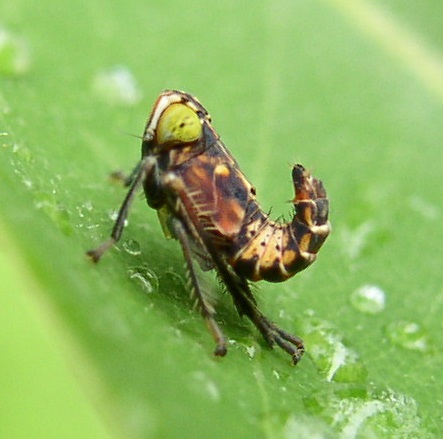|
Scolypopa
''Scolypopa'' is a genus of planthoppers in the family Ricaniidae. There are about eight described species in ''Scolypopa'', found mainly in Australia and New Zealand. Species These eight species belong to the genus ''Scolypopa'': * ''Scolypopa aeneomicans'' Haupt, 1926 * ''Scolypopa aphrophoroides'' (Walker, 1862) * ''Scolypopa australis'' (Walker, 1851) (passionvine hopper) * ''Scolypopa confinis'' (Distant, 1906) * ''Scolypopa delecta'' (Melichar, 1898) * ''Scolypopa kurandae'' Kirkaldy, 1906 * ''Scolypopa scutata'' Stål, 1859 * ''Scolypopa stipata'' (Walker, 1851) References External links * Auchenorrhyncha Hemiptera of New Zealand Hemiptera of Australia Taxa named by Carl Stål {{auchenorrhyncha-stub ... [...More Info...] [...Related Items...] OR: [Wikipedia] [Google] [Baidu] |
Scolypopa Australis
''Scolypopa australis'', commonly known as the passionvine hopper, is a species of insect in the Ricaniidae family of planthoppers (Fulgoroidea) that is native to Australia and was introduced to New Zealand. Despite its name, they are found not only on passion vines, but on many plant species, including kiwifruit and the lantana. Brown with partly transparent insect wing, wings, they are 5–6 mm long as adults and 5 mm as nymphs. As an adult they look somewhat like a moth to the untrained eye, and walk "like a ballerina". The Nymph (biology), nymphs are wingless and are informally known as fluffy bums. When sufficiently aroused they will hop off their plant "with a 'snap'". Like all planthoppers they suck plant sap. This leaves a honeydew (secretion), honeydew secretion which honey bee, bees gather. In New Zealand They were first recorded in New Zealand in 1878, where they are among over 40 species of planthopper, mostly native, but including the introduced ''Siphanta acuta'' (g ... [...More Info...] [...Related Items...] OR: [Wikipedia] [Google] [Baidu] |
Scolypopa Australis P1150882a
''Scolypopa'' is a genus of planthoppers in the family Ricaniidae. There are about eight described species in ''Scolypopa'', found mainly in Australia and New Zealand. Species These eight species belong to the genus ''Scolypopa'': * ''Scolypopa aeneomicans'' Haupt, 1926 * '' Scolypopa aphrophoroides'' (Walker, 1862) * ''Scolypopa australis ''Scolypopa australis'', commonly known as the passionvine hopper, is a species of insect in the Ricaniidae family of planthoppers (Fulgoroidea) that is native to Australia and was introduced to New Zealand. Despite its name, they are found not ...'' (Walker, 1851) (passionvine hopper) * '' Scolypopa confinis'' (Distant, 1906) * '' Scolypopa delecta'' (Melichar, 1898) * '' Scolypopa kurandae'' Kirkaldy, 1906 * '' Scolypopa scutata'' Stål, 1859 * '' Scolypopa stipata'' (Walker, 1851) References External links * Auchenorrhyncha Hemiptera of New Zealand Hemiptera of Australia Taxa named by Carl Stål {{auchenorrhyncha-stub ... [...More Info...] [...Related Items...] OR: [Wikipedia] [Google] [Baidu] |
Ricaniidae
Ricaniidae is a family (biology), family of planthopper insects, containing over 400 species worldwide. The highest diversity is in tropical Africa and Asia and in Australia, with a few species occurring in the Palearctic and Neotropical realms. It is one of the smaller families in the planthopper Taxonomic rank, superfamily Fulgoroidea. Subfamilies and genera As of 2022, ''Fulgoromorpha Lists on the Web'' includes: Subfamily Pharsalinae (Neotropical - all presently monotypic) * ''Pharsalus (planthopper), Pharsalus'' * ''Ricamela'' * ''Silvanana'' Subfamily Ricaniinae * ''Acroprivesa'' * ''Alisca'' * ''Aliscella'' * ''Apachnas'' * ''Aprivesa'' * ''Armacia'' * ''Armilustrium (planthopper), Armilustrium'' * ''Carmentalia (planthopper), Carmentalia'' * ''Coniunctivena'' * ''Cotrades'' * ''Cyamosa'' * ''Deferundata'' * ''Deraulax'' * ''Epitemna'' * ''Epithalamium (planthopper), Epithalamium'' * ''Euricania'' * ''Globularica'' * ''Hajar (planthopper), Hajar'' * ' ... [...More Info...] [...Related Items...] OR: [Wikipedia] [Google] [Baidu] |
Carl Stål
Carl Stål (21 March 1833 – 13 June 1878) was a Swedish people, Swedish entomologist specialising in Hemiptera. He was born at Karlberg Castle, Stockholm on 21 March 1833 and died at Frösundavik near Stockholm on 13 June 1878. He was the son of architect, author and officer Carl Stål then Colonel, Swedish Corps of Engineers. He matriculated at Uppsala University in 1853, studying medicine and passing the medico-philosophical examination in 1857. He then turned to entomology and completed his Ph.D. at the University of Jena in 1859. The same year he became assistant to Carl Henrik Boheman in the Zoological department of the Swedish Museum of Natural History in Stockholm, where, in 1867, he was appointed keeper with the title of professor. He made collecting trips in Sweden and throughout Europe and visited other museums including the collection of Johan Christian Fabricius in Kiel. His study of the Fabrician types resulted in his "Hemiptera Fabriciana". A significant part of ... [...More Info...] [...Related Items...] OR: [Wikipedia] [Google] [Baidu] |
Auchenorrhyncha
The Auchenorrhyncha suborder of the Hemiptera contains most of the familiar members of what was called the "Homoptera" – groups such as cicadas, leafhoppers, treehoppers, planthoppers, and spittlebugs. The aphids and scale insects are the other well-known "Homoptera", and they are in the suborder Sternorrhyncha. Distributed worldwide, all members of this group are plant-feeders, and many are vectors of viral and fungal diseases of plants. It is also common for Auchenorrhyncha species to produce either audible sounds or substrate vibrations as a form of communication. Such calls range from vibrations inaudible to humans, to the calls of many species of cicadas that can be heard for hundreds of metres, at least. In season, they produce the most characteristic and ubiquitous noise of the bush. Etymology The word "Auchenorrhyncha" is derived from the Greek words αὐχήν (auchēn), meaning "neck" or "throat," and ῥύγχος (rhynchos), meaning "snout". Classificat ... [...More Info...] [...Related Items...] OR: [Wikipedia] [Google] [Baidu] |

